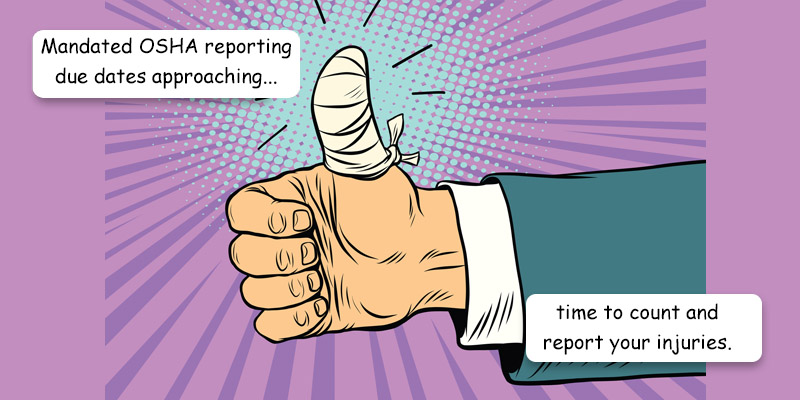The Occupational Safety and Health Act of 1970 created the Occupational Safety and Health Administration (OSHA) to ensure safe and healthful working conditions for workers. It is a division of the U.S. Department of Labor and they set and enforce standards, as well as reporting requirements. In short, it is one more set of government regulations many businesses will need to comply with or otherwise, face penalties.
Employers with 11 or more employees, at any point in 2023, are required to post OSHA Form 300A, Summary of Work-Related Injury and Illnesses, from February 1 through April 30, unless they qualify as an exempt low-risk industry. The posting is required, whether there were any work-related injuries or illnesses or not. OSHA Form 300A must be certified by a company executive and posted in a conspicuous location where notices to employees are customarily posted. A list of the low-risk exempt industries is maintained on OSHA’s website and identifies industries by the first four digits of the North American Industry Classification System (NAICS) code. There you will find mostly white collar offices, doctors offices, retail businesses and even restaurants, so be sure you confirm your business is not listed. There is no official filing requirement; only posting the form is necessary. The Form 300A posting includes the following information:
- The total number of non-first-aid occupational injury and illness cases
- The total number of cases with days away from work, cases with job transfer or restriction and total number of other recordable cases
- The cumulative total number of days from all injuries or illnesses, including days away from work and job transfer restrictions
- The number of occupational injury/illness cases, including skin disorders, respiratory conditions, poisoning, hearing loss and all other illnesses
Employers that had 250 or more employees in 2023, or 20-249 employees if they’re in high-risk industries (not on the low-risk industries list,) must file their OSHA Form 300A data electronically to OSHA by March 2, 2024. Data is reported via OSHA’s Injury Tracking Application (ITA).
There is one further grouping of employees with filing requirements, which are those employers that had 100 or more employees in 2023 in a designated high-hazard industry. That list can also be found on OSHA’s website. Employers in this group are required to electronically submit information from their Form 300, Log of Work-Related Injuries and Illnesses, and Form 301, Injury and Illness Incident Report, through the latter OSHA IT website.
There are currently 22 OSHA-approved workplace safety and health programs operated by individual states/territories. If your business is located in one of these states, be sure you are in compliance with your state OSHA laws. The list of states is maintained and can be found on OSHA’s State Plans webpage.
A few weeks ago, OSHA issued the 2024 penalty amounts, which took effect January 26, 2024. OSHA’s maximum penalties for serious and other-than-serious violations will increase from $15,625 per violation to $16,131 per violation. The maximum penalty for willful or repeated violations will increase from $156,259 per violation to $161,323 per violation. So, it is probably a good idea to maintain and comply with the recordkeeping rule, as well as meeting the posting and filing deadlines.
If you are a PayMaster client, PayMasterHCM’s HRIS can produce the OSHA reports based on its incident tracking system.
While we make every attempt to ensure the accuracy and reliability of the information provided in this document, the information is provided “as-is” without warranty of any kind. Romeo Chicco or PayMaster, Inc does not accept any responsibility or liability for the accuracy, content, completeness, legality, or reliability of the information contained. Consult with your CPA, Attorney, and/or HR Professional as federal, state, and local laws change frequently.

